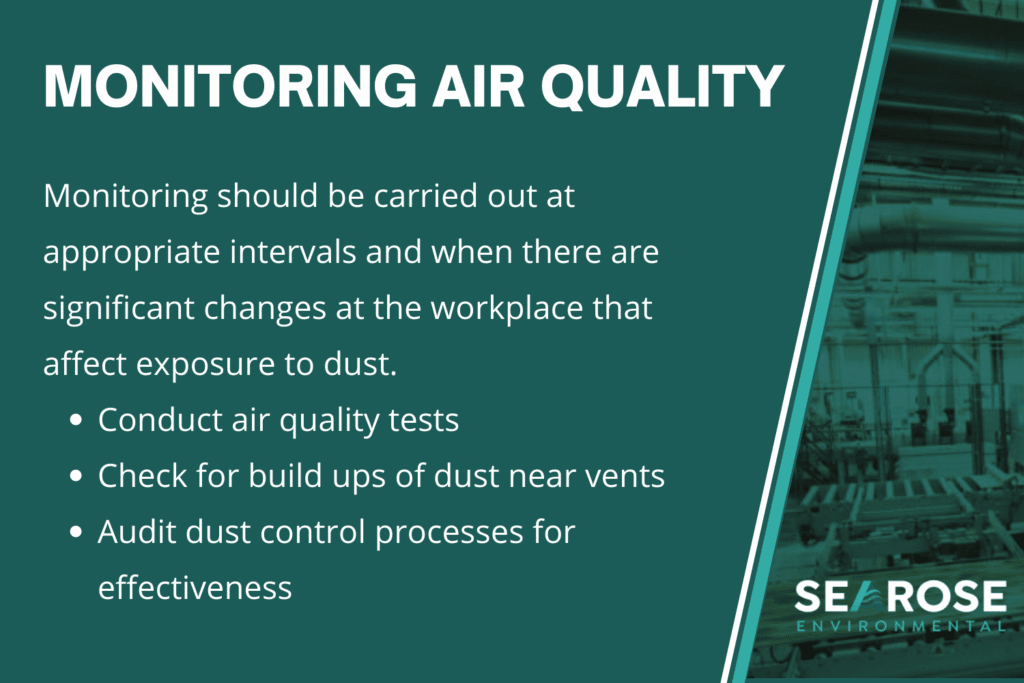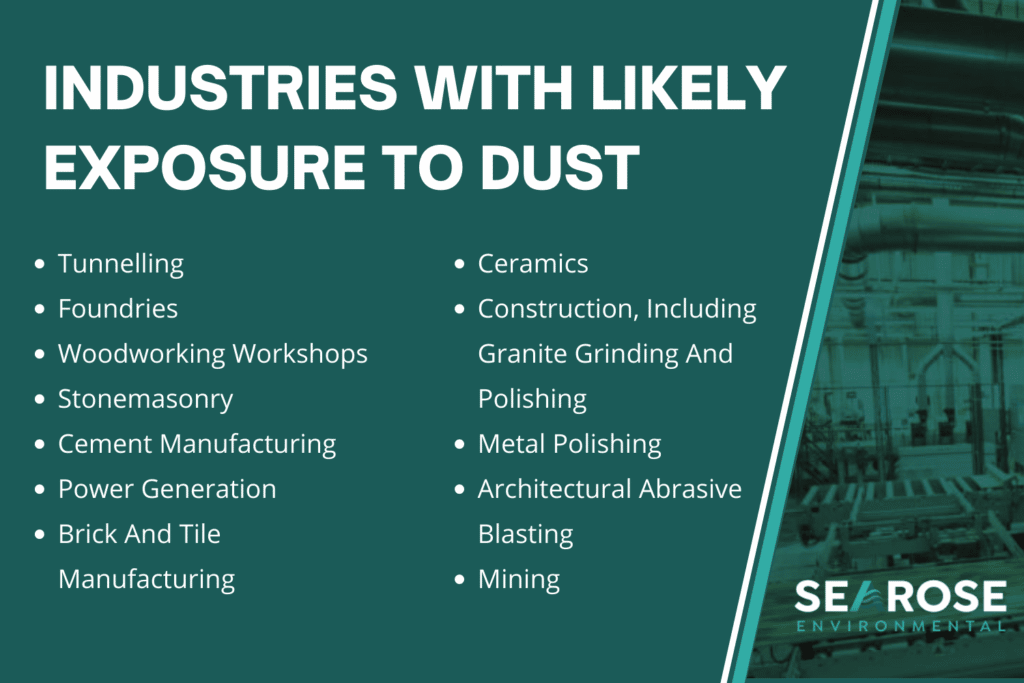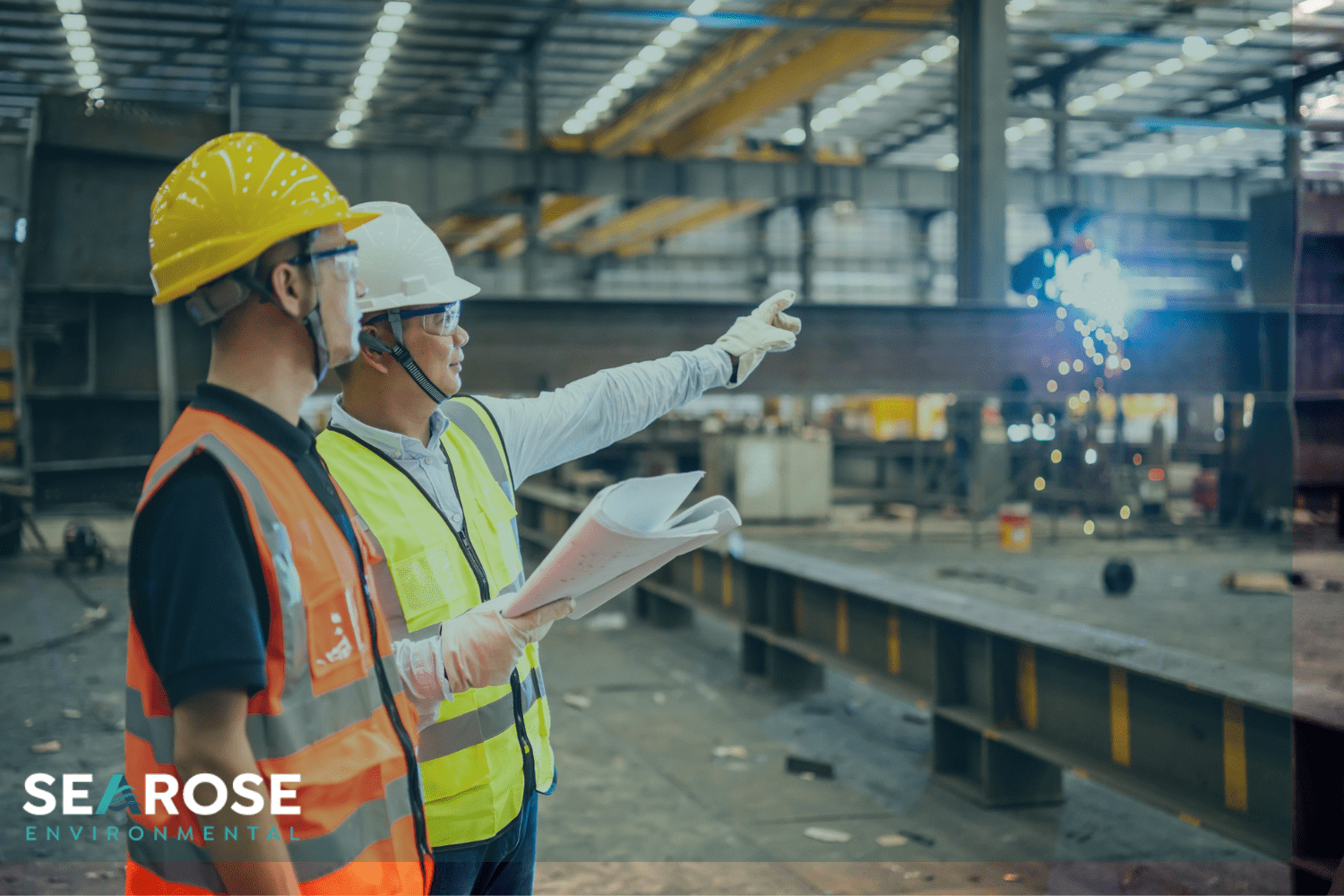According to SafeWork Australia, a person conducting a business or undertaking (PCBU) has a primary responsibility to provide a healthy and safe working environment for staff while they are at work, as well as anyone who might be affected by the nature of the work, including visitors and neighbours.
With a particular focus on the workplace environment, within this article, Searose Environmental will outline the responsibilities of PCBU in regard to airborne pollutants and keeping workers and the general public safe from dust and other harmful particles.
Responsibilities of PCBU for the workplace for health and safety
Under the WorkSafe laws detailed across the various Australian states and territories, a Person Conducting Business or Undertaking (PCBU) is legally required to identify hazards and assess any risks that are posed to workers within the workplace.
The PCBU is required to provide workers with appropriate information, training, instruction, and supervision on the appropriate control measures against risks and hazards in the workplace. There is no one single responsibility of a PCBU, but a collection of obligations with the ultimate goal of keeping workers safe.
The risk of dust exposure
One of the most significant risks in the workplace is exposure to respirable pollutants such as dust. In workshops that produce building products such as stone bench tops, concretes, and bricks, or through woodworking, exposure to airborne pollutants can be extremely harmful. When workers cut, grind, or drill any of these materials under dry conditions, the tiny particles of respirable dust are released into the air. Exposure to dust and other airborne pollutants has been linked to a number of occupational diseases, including silicosis and lung cancer.

Air quality monitoring
One of the responsibilities of PCBUs in the workplace is to monitor the air quality in worksites where airborne dust or silica is likely to be generated.
Worker health monitoring
Australian work health and safety laws make it an obligation for PCBUs to conduct regular health monitoring on workers that are conducting ongoing work near airborne pollutants where they might pose a serious risk to the worker’s health.
Industries with likely exposure
Harmful dust is frequently encountered in extractive industries, and is produced in the generation of many building materials; as such, there are thousands of workers across the country facing potential exposure to the particles each day.

PCBU responsibility to minimise risks associated with dust
According to WHS regulation 49, one of the many responsibilities of PCBU include making sure that exposure standards to dust or other airborne pollutants are not exceeded. Proper control measures include the provision of accurate information on the use of personal protective equipment (PPE) in the workplace.
Otherwise, control measures include providing proper dust extraction equipment in the workplace to keep workers safe. It is the responsibility of the PCBU in an industrial workspace to install an adequate system that is able to keep up with the demands of their workplace.
Their dust collection system must routinely collect the generated dust and particles from the air in the working environment to keep workers healthy.
Common workplace actions like trimming, cutting, sanding, grinding, drilling, or polishing engineered stone without effective hazard controls will generate dangerous levels of dust. PCBUs must not allow workers to undertake dry cutting or related work without the proper controls, or risk exposure to dangerous levels of dust.
Isolation of equipment
Isolating the cutting area from other workers is one control method in keeping workers safe. By isolating the worker with the cutting or drilling equipment from the rest of the workplace, you are effectively lowering the number of workers that can be exposed to the dust.
PCBUs can install barriers between workers and the machines producing dust, both workers operating the machinery and workers nearby. PCBUs can isolate these processes by:
- Conducting dust generation actions in an enclosed room or booth with restricted access
- Setting up physical barriers or exclusion zone between workers and work stations.
- Putting eating zones well away from work zones
Local exhaust ventilation
Another way in which the responsibilities of PCBUs can be fulfilled is through the installation of local exhausts at the point of generation. Local exhaust ventilation (LEV), when installed effectively, removes airborne contaminants from the environment before they reach the breathing area of workers. LEV’s capture dust the source, and these collected particles are filtered through the machine and collected for disposal, whilst the clean air is recycled back into the ventilation system or exhausted into the atmosphere outside the workplace. A dust collection system like an LEV is essential to manage the air quality and physical wellbeing of those at work.
For drilling, sawing, cutting or similar actions, the LEV must be fitted appropriately to the workspace.
The PCBU is responsible for ensuring that the distance between the dust extraction unit and the generating machine is close enough to capture as much dust as possible, without interfering with the safe operation of the machine.
Variations to LEV
Some tools used in the workplace have attachable on-tool LEV systems. These attachments are smaller and operate simultaneously with the regular actions of some tools. The dust generated from cutting, drilling, or sanding tools is drawn into the hood of the tool and into a hose connected to a vacuum, where a similar procedure follows to the external LEV systems. Wooden dust and silica are highly abrasive to all types of LEV equipment. The PCBU is responsible for regularly inspecting the equipment for damage, or servicing dust extraction equipment through an experienced third-party company. Doing this will ensure its effectiveness at keeping workers safe.
Supporting natural airflow
Improving the general ventilation within a room or industrial complex will help reduce the exposure levels of dust in the air. Ventilation should not be depended on as the only way of managing exposure but should be combined with other controls.
For indoor workplaces, windows and doors must be used to encourage general ventilation and airflow. PCBUs may install fans to move the air through the space in a well-thought out direction. Clean air should be pushed past workers and dusty air drawn away from workers.
Wrapping up
The responsibilities of any PCBU all align with keeping workers safe in a secure workspace. Whilst some control measure work better than others, the best way of tackling dust exposure is through a combination of measures to limit the risks involved in working with stone and other materials.
For PCBUs looking to ensure accurate and efficient dust control and dust suppression in the workplace, a dust control system is the answer.
With over 40 years of experience helping our customers with industry-leading dust control solutions in Sydney and Brisbane, our dust collectors and extraction systems are custom designed and built-to-order to guarantee the best results for your working environment. For more information, get in touch with Searose Environmental today.
